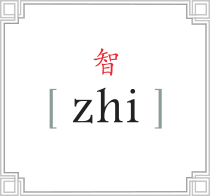Raw Puer: He Kai Shan Menghai 200-500yr 2014 - LIMITED!!
The He Kai Shan Raw Puer Tea Cake was made of tea leaves harvested from 200-500 year-old ancient arbor tea trees during March 2014. It produces an infusion with a very appealing thick body and long lasting sweetness.
He Kai village puer tea has been gaining popularity due to its highly aromatic yet gentle nature. One of the largest well-preserved ancient tea gardens exists in the He Kai Mountains; an area south of Menghai town on the way to Lao Ban Zhang.
Pesticide and chemical fertilizer have never been used in the centuries of production in the tea gardens of this region. This harvest of raw puer has a light smokiness accompanied by a rich, full mouthfeel. The finish is gentle, long-lasting and cleansing. The liquor exudes a soft reddish yellow hue. The texture of this tea is very accessible, making it a very satisfying experience for puer enthusiasts but also easy and welcoming to those just starting out.
There is a widespread misunderstanding that raw puer can only be drunk after at least 5-10 years aging. However, raw puer of good quality especially those made of leaves harvested from old or ancient arbor tea trees such as the He Kai raw puer cake is extremely enjoyable even in current years of production.
Call us at 512-220-3839 for rare Puer cakes and bricks.
AKA Puer, Puerh
Hint: Shorter steep time for more sweetness.
Preparation Methods:
Gaiwan or Yi Xing Pot: (recommended)
Put about 5g or 2 tsp into heated vessel;
Pour 200 degree water into vessel. Brew for 20 seconds for the first brewing, 10 for second, add about five seconds for each subsequent brewing.
Western Style:
One heaping tsp per 12 oz cup, or one Tbsp per 24 oz pot
205 degree water
Steep for 2-3 minutes or to taste. Should be steeped multiple times
Flavor/taste note: An intense, long lasting, exotic and flowery aroma with lingering tropical fruit notes. The flavor has bittersweet and fruity complements with a semi-dry start and mouth-watering finish.
Basic Steeping Tips
- Use filtered or spring water, whenever possible
- Don’t overboil water
- Remove leaves after recommended time (adjust to taste)
- If you want stronger tea, use more leaves instead of steeping for a longer time
Leaves can be resteeped many times resulting in various flavor differences. Don’t throw out those leaves until they have given it all up
Pu-er is one of the oldest types of tea in China with a history of over 1700 years, tracing back to the Eastern Han Dynasty. During its height of popularity, the tea was freely traded even used as money for the bartering of goods. Puer gets its name from the city of Puer in south-western China where the trade for Pu-erh was conducted. Not far from Puer are the areas of Xishuangbanna and Simou, where cultivation and processing of the tea is carried out today.
Unlike other teas, the processing of puer is still a bit mysterious in the West. In the past, trespassers mistaken as spies on Puer tea farms were known to be killed. To this day, the secret of processing Puer remains guarded and it is only in Yunnan, China where genuine Puer tea can be produced. The most basic processing methods are indoor withering, a quick wok fired heat to kill a bitter enzyme, rolling (to break up some cellular structures to enhance flavor), sun drying, steam, compress, finally drying.
Puer tea is well-known for its ability to undergo a post-fermentation process designed for further aging, similar to wine. The aging process allows the tea to develop added complexity in character. With active microbes living within the tea, Puer evolves with each passing year. This is the most fermented tea in China. It is traditionally compressed and packed into tea cakes or bricks to age, which originated from the natural aging process that happened in the storerooms of tea drinkers and merchants, as well as on horseback caravans on the Silk Road. This method eased horseback transportation and reduced the damage to the tea.






